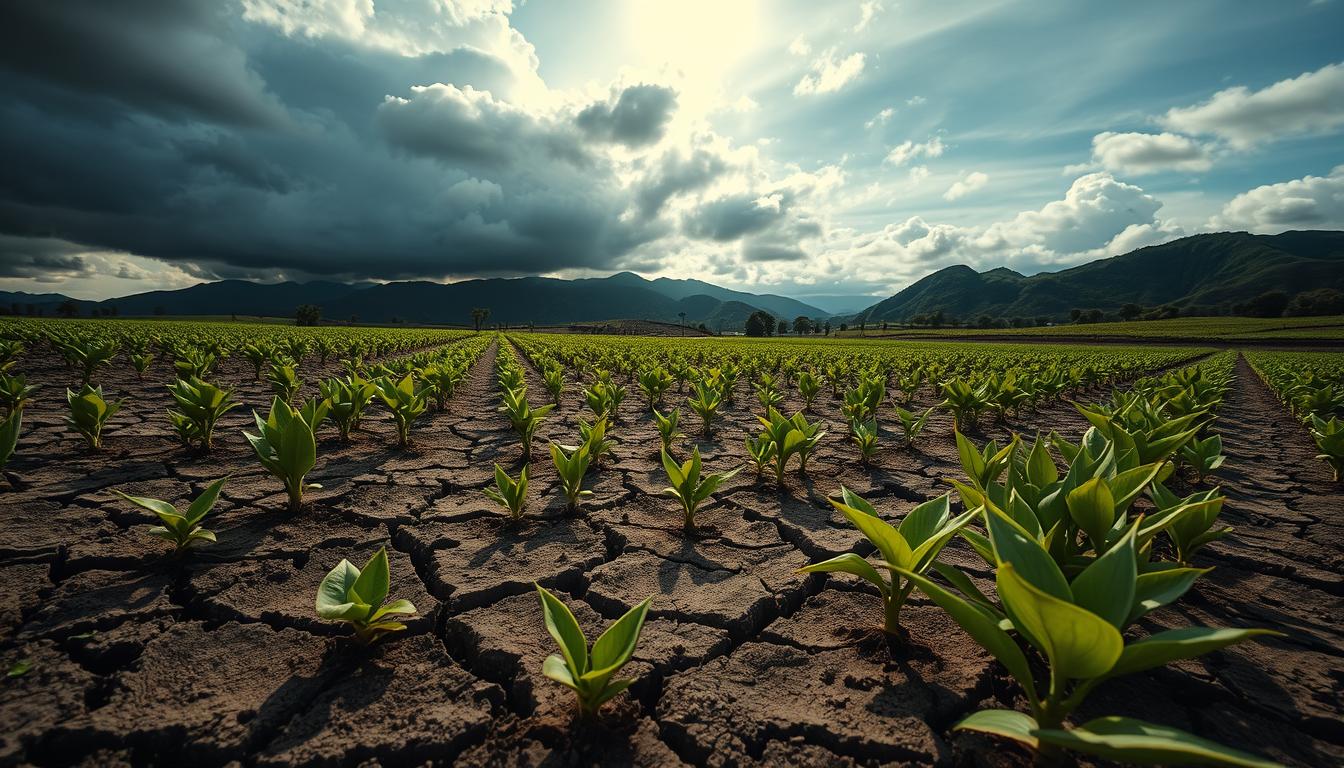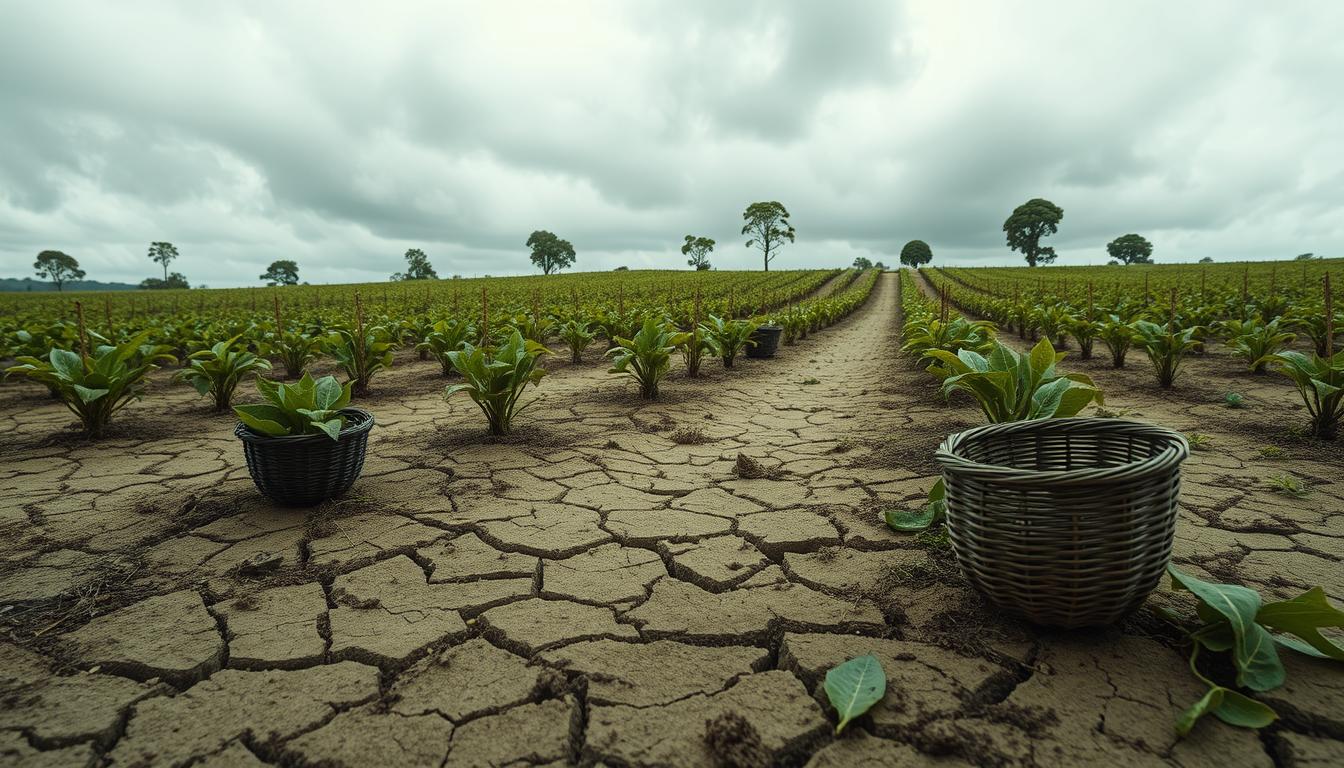Did you know the matcha tea market is worth $3.48 billion now? It’s expected to hit $5.78 billion by 2028. This growth is due to health trends, food popularity, and cultural importance. But, a big problem is looming.
The matcha shortage is linked to COVID-19, labor issues, and bad weather. These factors threaten the growth of the industry and affect consumers. Let’s look at what’s causing this crisis and possible fixes.
Key Takeaways
- The matcha tea market is projected to reach $7.1 billion by 2028, nearly double its current value.
- About 80% of adults are keen on living healthier lives, spiking the demand for matcha.
- Adverse weather conditions and labor shortages are significant contributors to the matcha shortage.
- The market value of matcha is expected to increase from $2.3 billion to $2.9 billion by 2028.
- The matcha industry is adapting through innovative farming techniques and sustainable practices.
Understanding the reasons behind the matcha shortage is key. It shows us the big problem of green tea powder scarcity today. Join us as we explore the causes, effects, and solutions to this issue.
Introduction to the Matcha Shortage
Matcha tea’s popularity is growing fast. This is because of matcha production challenges. Japan and China are the main places where matcha is made. The global matcha supply disruption is caused by many factors.
The market for matcha is expected to hit 5.370 billion USD by 2028. It’s growing at a 5.6% CAGR. This means more people want matcha because of its health benefits and antioxidants.
Health and wellness fans are driving this trend. They see matcha as a healthy choice. This has made matcha more popular in tea cultures and daily life.
But, matcha producers are facing big problems. Labor shortages and bad weather are making it hard to make matcha. Climate change and natural disasters have also hurt harvests.
The COVID-19 pandemic made things worse. It affected the labor force and supply routes. This has made it hard to keep matcha production steady.
These challenges have big effects. Consumers might find it hard to get matcha. Prices could go up, and people might buy differently.
Businesses that use matcha will have to find new sources or change their prices. This is because of the global matcha supply disruption.
To solve the shortage, we need to find new ways to make matcha. We also need to farm sustainably. Working together in the industry can help prevent future shortages.
By doing this, we can keep matcha quality high. We also protect the environment. Sustainable farming is good for everyone in the long run.
Why the Demand for Matcha is Skyrocketing
Matcha, once a traditional Japanese tea, is now loved worldwide. Its green color and health perks have made it very popular. Social media has also helped matcha become a favorite.
Health Benefits Driving Popularity
Matcha’s green color means it’s full of good stuff. It has antioxidants, vitamins, and minerals. It can help your body and brain work better.
More people want natural foods like matcha. This has made matcha tea very popular. The market is expected to grow a lot in the next few years.
The Influence of Social Media
Social media has made matcha even more popular. Pictures of matcha drinks and desserts look great online. This has made more people want to try matcha.
Brands like Starbucks use social media to show off their matcha products. This helps matcha reach more people. It’s becoming a big part of our culture.
Matcha’s health benefits and looks have caught many people’s attention. It’s everywhere on social media and in health circles. Matcha is definitely on the rise.
Impact of COVID-19 on Matcha Production
The COVID-19 pandemic has greatly affected matcha production worldwide. It caused big problems in labor and supply chains. This made it hard for tea regions to make this green tea powder. Also, importing matcha became more complicated and expensive because of new rules.
Labor Shortages in Tea-Producing Regions
The pandemic led to big labor shortages in tea areas. This hurt matcha production a lot. With fewer workers, the quality and amount of matcha went down.
Small tea farmers, who make up 60% of tea worldwide, were hit hard. The Tea sector, worth over USD 17 billion a year, faced big challenges. The world tea trade, worth about USD 9.5 billion, had trouble with fewer workers.
Supply Chain Bottlenecks
COVID-19 also made supply chains very tight. This made it hard to get matcha from farms to markets. It led to higher costs and delays.
Importers faced new rules on matcha imports. This made it harder to move matcha around the world. Companies like Starbucks had to cut back on matcha because of this.
A study by Ahmed et al. (2019) showed how the environment affects tea making. The pandemic made these problems worse. Matcha, with more catechins than other green teas, needs careful making. Any problem can cause big issues.
It’s important to store matcha right to keep it fresh and good. For tips on keeping matcha fresh, check out this article on matcha shelf life.
| Aspect | Impact |
|---|---|
| Labor Shortages | Reduced workforce, affecting harvest and processing |
| Supply Chain | Increased costs and delays in transport |
| Matcha Import Restrictions | Difficulties in global logistics, higher import costs |
Key Factors Causing the Matcha Shortage
The global matcha market is facing big challenges. The decline in matcha crop yield makes it hard to find quality matcha. Let’s look at what’s causing this problem.
Adverse Weather Conditions
Changing weather is a big reason for the matcha shortage. Climate change brings unpredictable weather, harming tea plants. Too much rain, extreme temperatures, and changing seasons hurt matcha crops.
Labor-Intensive Farming Process
Creating artisanal matcha needs a lot of manual work. This includes growing, shading, harvesting, and processing tea leaves. This process is slow and expensive.
With demand rising, finding skilled workers is tough. Japan, known for its matcha, is under a lot of pressure to keep up.
Market Implications of the Matcha Shortage
The matcha shortage is affecting the market a lot. It’s changing how people buy and how businesses run. As more people want matcha, it’s harder to find, causing big problems.
Increased Prices and Consumer Behavior Shifts
The matcha shortage has led to higher prices. This makes people think twice before buying. They might choose cheaper drinks or lower-quality matcha.
It’s hard for them to find good matcha that’s affordable. The rise in matcha-flavored foods and drinks also adds to the cost.
Impact on Businesses and Cafes
For businesses and cafes, the shortage is a big problem. Matcha sales have grown a lot, making the shortage even harder. Some places might close or cut back on matcha.
Companies like Midori Spring Ltd and Encha Life LLC are trying to solve the problem. They’re working on new ways to make matcha and getting help from Japanese farmers. But, it might take time to fix the issue.
Big matcha companies are also coming up with new ideas. They’re merging and working together to stay strong in the market.
The Role of Climate Change in Matcha Scarcity
Climate change is making it hard to grow matcha. Bad weather is hurting crop yields. This is changing farming and the future of matcha.
Adverse Weather Patterns Affecting Crop Yields
Climate change is causing weird weather like frost and too much rain. Places like Kenya, which makes a lot of tea, are at risk. Tea-growing areas in Kenya might shrink by 8% in five years.
In India, Darjeeling Tea production has dropped. This shows how climate change hurts plants. Darjeeling has seen hotter temperatures and less rain, affecting matcha quality.

Climate Change and Its Long-Term Effects
Climate change has big long-term effects. It’s important to make matcha production more sustainable. In Assam, India, tea growers face tough weather.
Using clean energy and cutting emissions can help. Without these steps, matcha might be hard to find.
Exploring Sustainable Alternatives to Matcha
The matcha crisis has made people look for new ways to farm and make matcha. The world wants more matcha than we can make. So, we’re looking at new places and ways to grow it.
New farming methods are being tried. These use technology and new farming ways to grow more matcha. Drip irrigation and organic farming help matcha grow better, even when the weather is bad.
Also, we’re growing matcha in new places. Countries like Japan and China are trying to grow more matcha. This helps because it spreads out the growing areas and makes sure we have enough matcha.
Here’s a look at the current and potential matcha production sites:
| Region | Current Status |
|---|---|
| Japan | Primary producer with traditional methods |
| China | Secondary producer, rapidly expanding |
| South Korea | Emerging producer, adopting new techniques |
| Taiwan | Experimental cultivation underway |
| USA (Hawaii and California) | Exploratory phase, climate adaptation in progress |
Using these new ways to farm and make matcha can help us meet the demand. By being green and growing in new places, we can keep matcha available for everyone. This way, matcha will stay a favorite drink around the world.
Evaluating the Quality of Matcha Suppliers
Finding the best matcha sources is key during a shortage. It’s important to check both the quality and the supplier’s reliability. We’ll look at what makes a good matcha supplier.

Source of Matcha
The matcha’s origin affects its quality. Japanese matcha from places like Uji or Nishio is known for being top-notch. This is because of the traditional farming and the right growing conditions.
Suppliers from these areas usually offer high-quality matcha. China also has a big share of the market. But, the quality there can vary a lot, so it’s crucial to check suppliers carefully.
Grade and Quality Indicators
Matcha comes in different grades, like ceremonial and culinary. Ceremonial matcha is bright green and smooth, perfect for tea ceremonies. Culinary matcha is better for cooking and drinks.
When checking matcha quality, look at its color, smell, and taste. A good matcha has a lot of antioxidants. This means it’s of high quality.
Customer Reviews and Supplier Reputation
Customer feedback and supplier reputation are very important. They show if a supplier is reliable and offers good quality matcha. Big names like Aiya, Marushichi Seicha, and ShaoXing Royal Tea are leaders in the market.
Choosing a supplier with good reviews and a solid reputation is key. This way, you can get the best matcha, even when it’s hard to find.
Strategies to Mitigate Matcha Supply Issues
With the ongoing matcha shortage, it’s key to diversify matcha supply and find new solutions. Sourcing matcha from different places is a smart move. Japan’s southern half, especially Yame in Fukuoka Prefecture, is known for its high-quality matcha.
By getting matcha from various regions, you avoid problems caused by local weather and labor issues. This approach helps keep your matcha supply steady.
Using new farming methods is also vital in dealing with matcha scarcity. Hoshinoen, a famous producer, shows how making matcha in small amounts keeps it of high quality. They carefully shade the matcha bushes and train their artisans to be tea masters.
Even their best matcha, “SEIJYU,” has limits. You can only buy 40g cans of it for three at a time. This shows how even top-quality matcha faces challenges.
Adding sustainable practices to matcha production is also important. Using technology can help solve labor problems and strengthen supply chains. These steps help build a strong matcha supply system. It can handle current shortages and future problems.


